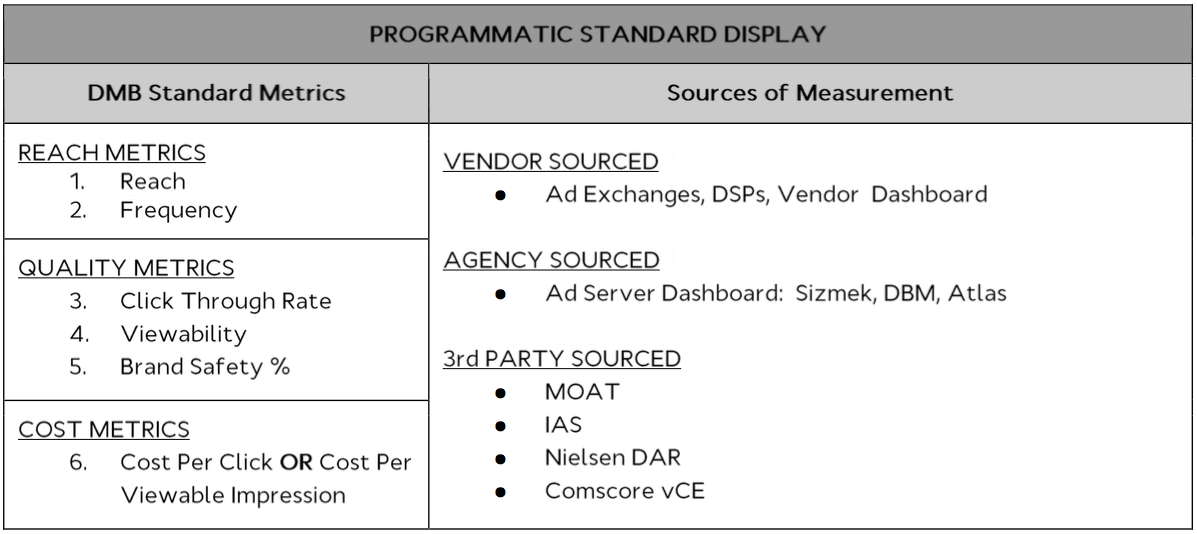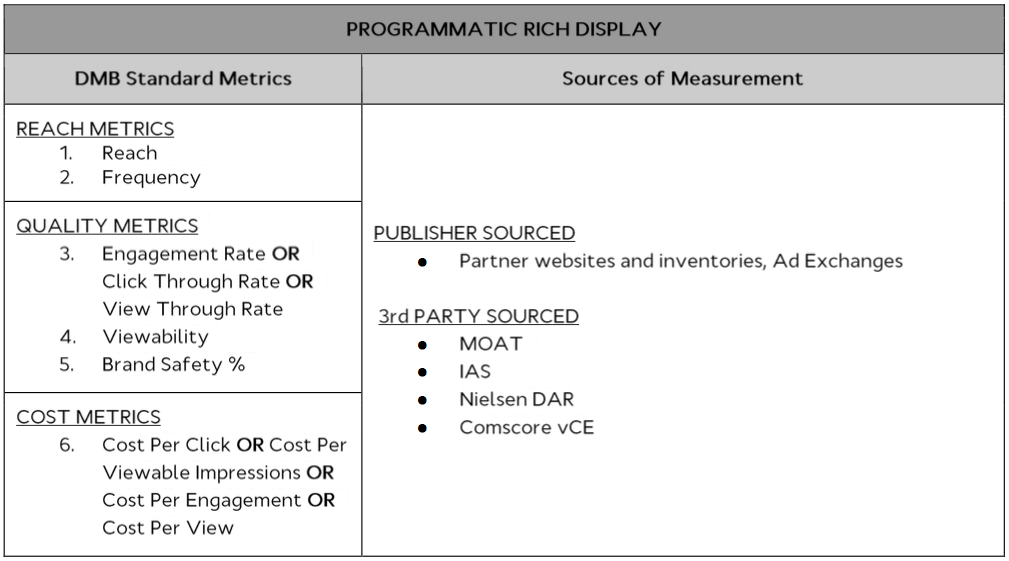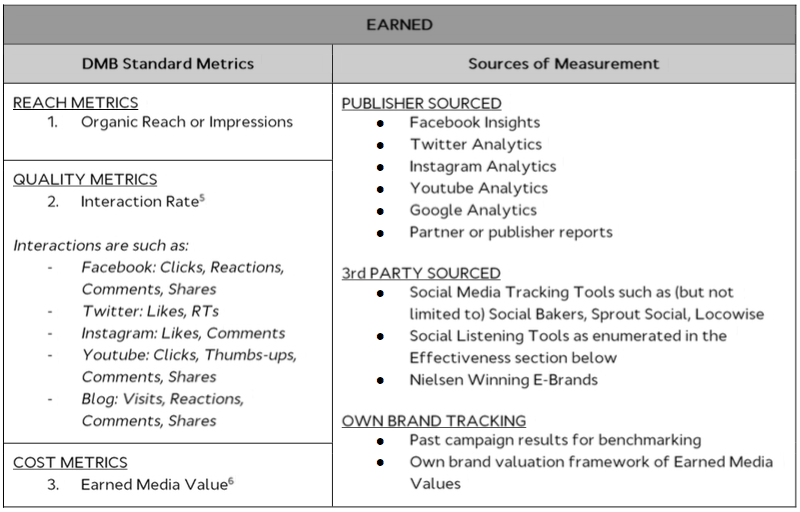The advertising industry has taken its first step towards developing a measurement standard for digital.
The Digital Measurement Board of the IMMAP, chaired by Hans Roxas-Chua of the Certified Digital Marketing Program (CDM) and Dennis Perez of Unilever and composed of media, measurement, and research industry leaders, launched the Philippine Digital Measurement Standard, the first of its kind in the country and the region. The standard was revealed last August 24, 2017 at the BGC Arts Center during another milestone event for the advertising industry — a joint General Membership Meeting of the three biggest advertising associations, the Association of Accredited Advertising Agencies – Philippines (4As), the Internet and Mobile Marketing Association of the Philippines (IMMAP), and the Philippine Association of National Advertisers (PANA).
The need for a standard or a unified body of measurement in digital has always concerned many agencies, advertisers, and marketers in recent years as digital channels grew. The rapid increase in digital spend, coupled with the increase of digital ad units and inventories has made measurement and evaluation of effectiveness and business results more difficult. As Perez professed, agencies and advertisers are always at a crossroads on which metrics to look at, which benchmarks to set, and how to measure digital spend and efforts against business results.
The DMB, found in 2012 by the IMMAP, then embarked on a two-year study of digital metrics and benchmarking and involved media agencies, broadcasters and publishers, brands, industry associations, and even platforms like Google and Facebook to come up with the Philippine Digital Measurement Standard. The objective of the Measurement Standard is to “help advertisers evaluate the role of digital in driving business results by clarifying the metrics that matter, the benchmarks that define success, and the sources that can reliably provide measurement.”
Before presenting the framework of the Measurement Standard, Perez set down the scope of the DMB paper as well as its goals and steps moving forward.
The end goal of the DMB is to have one currency to evaluate digital performance, similar to Gross Rating Points (GRP) which is a standard measure for advertising impact.

Digital Measurement Board (DMB) co-chairs Hans Eric Roxas-Chua of the Certified Digital Marketer Program (CDM) and Dennis Perez of Unilever present the first paper of the Philippine Digital Measurement Standard
Perez clarified that the DMB has not produced that one currency yet, but emphasized that key to creating this is to first identify and define which metrics matter. For the first DMB paper released this year, the group focused on creating a standard for a list of metrics for each digital experience, definitions for these metrics, and a standard roster of partners to publish benchmarks and provide measurement for advertisers.
Yet, these standards are still subject to change to reflect the ever-changing landscape of digital. “Our work will always be in perpetual beta. Someone young in the team said that the nature of digital is that it always moves forward. As we speak, platforms are always re-engineered or platforms are being invented, and we’ll never get into a final document,” Perez said. As digital platforms and measures constantly change and update, so will the document, Perez stressed. “I think that truly reflects the nature of digital,” he added.
The Digital Measurement Standard Framework: E2 = Exposure x Effectiveness
The Philippine Digital Measurement Standard is built on the E2 = Exposure x Effectiveness framework. Exposure measures reach, quality of delivery and cost efficiencies, while Effectiveness measures the effect of the digital effort on the audience. Effectiveness metrics are also aligned with the conversion funnel — Awareness, Consideration, Purchase Intent, and Sales Conversion.
For the 2017 paper, the DMB is first covering segments of the conversion funnel from Awareness to Purchase Intent. It is currently developing the methodology to isolate the direct effect of digital advertising to sales conversion. Yet, the group aims to present the last stage in the funnel by 2018.
Exposure defined
Exposure is further broken down into two segments: Paid + Owned and Earned. The framework then can also be expressed as the following:
E2 = [Exposure] x [Effectiveness]
*where Exposure = (Paid + Owned) + Earned)
therefore
E2 = [(Paid + Owned) + (Earned)] x [Effectiveness]
Roxas-Chua however clarified that Exposure x Effectiveness is not an actual multiplication of values, but finding a correlation between digital metrics and business results and effectiveness.
Going deeper into Exposure and its segments, Paid + Owned metrics are identified and defined for each digital experience, which is how the audience interacts with a medium. These experiences are platform agnostic and includes video, search, display, and own websites. On the other hand, Earned metrics focus on the quantity and quality of organic reach. It is separated from Paid and Owned and may be measured on top or as a standalone such as in cases of campaigns which go viral without ad spending.
Exposure metrics are further classified into Reach Metrics, Quality Metrics, and Cost Metrics. Below is a matrix for the Exposure part of the framework.

The paper then went on to list and define the metrics for each digital experience. Below are summaries of the metrics and sources of measurement. The complete definitions can be found in the full DMB paper linked at the end of this article.







*All tables sourced from the Philippine Digital Measurement Standard paper by the DBM
Effectiveness defined
The second factor in the E2 equation is Effectiveness. This metric measures the effect of the digital ad on the audience at a given point in the conversion funnel. The paper defined each stage in the funnel as follows (with the exception of Sales Conversion as this is to be tackled in a future study):
Awareness: measure of respondent’s knowledge of an object or idea
Consideration: measure that evaluates competing purchase options
Purchase Intent: measure of respondent’s attitudes towards buying a product or service
In partnership with the Marketing & Opinion Research Society of the Philippines (MORES), the DMB came up with two criteria identify and asses methodologies for measuring effectiveness: validity (how close a tool measures what it claims to measure) and reliability (how a tool can produce similar results under consistent conditions).
DMB and MORES then classified effectiveness methodologies as market research (ex. studies by Nielsen, Kantar, IPSOS), publisher sourced (ex. Google Brand Lift, Facebook Brand Effect), Digital Based Monitoring (ex. based on social and web analytics).
While the DMB is finalising the approach for Digital Behavioural Monitoring which involves tracking user interactions such as taps, likes, mentions, clicks, and other such actions within social media sites and the like, Perez already mentioned that these can be contextualised in relation to stages in the conversion funnel so these can be correlated with Effectiveness measures.
More detailed information about Effectiveness metrics and sources/partners are found in the DBM’s document.
Roxas-Chua and Perez also mentioned that the DMB is working to have research and ratings agencies (ex. Kantar, Nielsen) publish metrics and benchmarks across sectors and industries using the Measurement Standard as a unified reference for agencies and advertisers.
Comments on the Philippine Digital Measurement Standard
The DMB has undoubtedly embarked on an arduous journey of providing a complex study as developing a standard for digital measurement in a medium that is ever-changing. The group also sought comments from other industry leaders in a panel held after the paper presentation.

(L-R) Denise Haak-Luchangco (QUIDDITY Usability Labs), Nicco De Jesus (Kantar Insights Technology, MORES), Hans Eric Roxas-Chua (CDM, DMB), Dennis Perez (Unilever), Paolo Mercado (Nestlé Philippines), Carlo Endaya (Smart Communications), Gladys Basinilio (MSAP), Donald Lim (Dentsu Aegis Network)
Paolo Mercado of Nestlé Philippines pushed for a mastery of one area of the Standard first. He mentioned focusing on the Exposure metric and working out one standard for the industry so there is definite comparability between for example, a Google or a Facebook reach. He added that the Measurement Standard should avoid the pitfalls of TV advertising, where advertisers do not really know which network has the higher ratings because these depend on which media ratings company releases the survey.
Gladys Basinilio of the Media Specialists Association of the Philippines (MSAP) admitted that there were more questions yet to be answered by the DMB with regard to the Measurement Standard, but cited the importance of this first step to smaller agencies and advertisers who will now have access to understanding digital measurement metrics to help them compete with bigger agencies.
Dentsu Aegis Network CEO Donald Lim professed that one of the key issues and goals that the IMMAP wanted to solve and accomplish since its creation is to come up with one currency to base all metrics and results against. Basically, “ano ang GRP ng digital?” he said. He admitted to some confusion between the presentation and reading the actual paper, and finding out what the Measurement Standard actually is from its creators. Yet, he commended the DMB for making the one moon step for the industry in creating a standard for digital measurement.
With regard to mobile metrics, Carlo Endaya, VP for Digtal Products & Partnerships at Smart Communications, expressed much positivism on the applicability of the Measurement Standard on the mobile space. He also recommended including more KPIs from mobile, especially on efficiency, to make the framework even more comprehensive. The bigger success factor for Endaya, too, is how the DMB was able to tap and collaborate with different industries to develop the Measurement Standard.
Nicco De Jesus of Kantar Insights Technology and MORES representative also regarded the DMB’s efforts as a step towards having more accountability in measuring digital efforts. He applauded the identification of the metrics and terms that the industry can agree on and hold as standards when performing measurements.
Denise Haak-Luchangco of QUIDDITY Usability Labs rounded out the discussion with a question on education on the standard among agencies, advertisers, and other industry stakeholders. As the standard should take into effect among the industry, she commented on the importance of educating stakeholders in whatever level of understanding they might have.
Roxas-Chua said that the first DMB paper will already serve as an education tool as this targets the majority of advertisers who may not be as well-versed as others in digital metrics and measurement.
The DMB is also preparing to go into the education phase, according to Perez. All committees will be broken up and assigned to educate and deployed per industry. The DMB is already taking in and forming volunteers to educate companies and even up to the executive level of these companies. The education phase will continue while the DMB prepares for the creation of more papers in 2018.
Future studies
While the E2 = Exposure x Effectiveness will be the official framework of the Philippine Digital Measurement Standard, the Standard itself will be constantly reviewed the DMB, the IMMAP, and other key industry stakeholders to ensure it stays relevant and current.
As the two co-chairs of the DMB earlier mentioned, the launch of the Measurement Standard is just the start of its development. In 2018, the DMB will produce more papers to cover the following:
Inclusion of Sales Conversion in Effectiveness
- Addition of Paid + Owned Experiences (ex. Sponsored Content, Messaging and Gaming)
- Expansion of Earned Metrics to include PR and Influencer Marketing (in partnership with the Public Relations Society of the Philippines, PRSP)
- An approach for Digital Behavioural Monitoring (Social Analytics, Social Listening, Web Analytics, etc.) in evaluating Effectiveness (in partnership with MORES)
Visit http://dmb.surge.sh/ to read and download the full the Philippine Digital Measurement Standard.
Philippine Digital Measurement Standard by Jeff Cordova on Scribd







